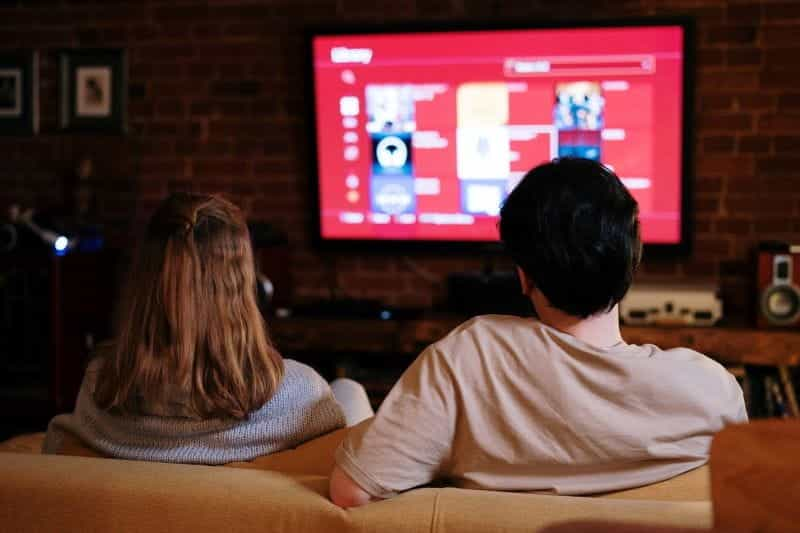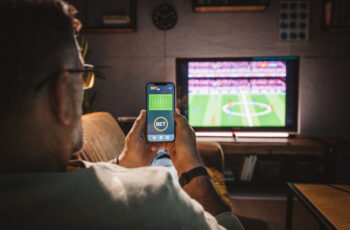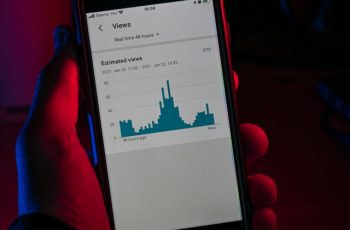RSPH Calls for Gambling Ad Ban
A nationwide poll has found that the majority of people in the UK would support an outright ban on gambling adverts. Campaigners have called on the government to make advertising restrictions tighter. Meanwhile, the ASA has reported that the number of gambling ads that children are exposed to on TV continues to drop.

Campaigners have criticized ITV for not banning gambling ads during Euro 2020 matches. ©Cottonbro/Pexels
Support for More Restrictions
According to a newly published poll from the Royal Society for Public Health, the vast majority of the British general public would support a total ban on gambling adverts. More than 12,000 people participated in the survey, which was conducted by YouGov. It found that 77% of adults and 66% of 11- to 17-year-olds were in favor of a pre-watershed ban on gambling ads aired on TV and radio.
The poll also found support for increased curbs on how gambling is advertised to consumers. 63% of adults and 53% of young people responding to the survey said that they supported a complete ban on ads for gambling products. The support for new restrictions on UK gambling ads was overwhelming, with only 14% of adults and children in opposition of a total ban.
Announcing the results of the survey, the RSPH called on the government to put new advertising restrictions in place as part of its Gambling Act Review. It highlighted the number of ads that football fans watching Euro 2020 matches are exposed to. Campaigners from social policy group Care had called on ITV to suspend gambling ads during the tournament, but the broadcaster said that it would only reduce them.
Many matches kick off at 8pm, so are subject to the whistle-to-whistle ban. Betting adverts cannot be shown from five minutes before until five minutes after the end of live sporting events broadcast on TV. The rule only applies before the watershed at 9pm though, so viewers are exposed to ads in the second half of matches.
The whistle-to-whistle ban has proved successful, but it is only voluntary. An official ban on gambling ads before 9pm from the government would tie in with commitments it has already made on junk food. The government recently announced that plans are underway to ban adverts for foods that are high in fat, salt and sugar from being shown online and by broadcasters before 9pm.
Campaigners Agree
The poll also recorded that 76% of adults and 64% of young people asked were in favor of a watershed ban on gambling ads online and on social media. 65% of adults and 54% of young people also said that gambling operators should not be allowed to sponsor sporting events or teams. Furthermore, 76% of adults said that the gambling industry should pay a levy to the government to tackle problem gambling.
The Department for Digital, Culture, Media and Sport is now going through the responses it received from the Gambling Act Review’s call for evidence earlier this year. While it is in this process, the RSPH has urged it take into account the results of YouGov’s latest poll and consider tighter rules on advertising to reduce gambling harms.
The RSPH pointed out that there is evidence to show that advertising does have an impact on gambling activity and behavior. By taking a public health approach, the government can safeguard those who are vulnerable to gambling harms and make gambling safer. Chief Executive of the RSPH Christina Marriott explained:
“Advertising is a powerful force in our society – it not only influences what we buy, but it also tells us what is normal, and what we should aspire to… We no longer allow air time to other products which harm our health, like tobacco products: gambling should be no different.”
The outcome of the poll has been met with support from campaigners, including Labor MP Carolyn Harris. The MP for Swansea East and chair of the Gambling Related Harm APPG has consistently called on the government to ban gambling ads. She said that there is strong public and parliamentary support for a ban, and that it would protect children and vulnerable people from harm.
ASA Reports Downward Trend
On June 11th, the Advertising Standards Agency published its figures on children’s exposure to age-restricted TV ads during 2020. It noted that the coronavirus pandemic had a huge impact on viewing habits and daily routines. Most people were forced to spend longer periods of time in the home during the lockdowns. Home entertainment, like watching television, became more important.
Last October, the ASA published its “Covid-19: Trends in Advertising” report, which analyzed viewing trends and exposure to various TV ads from March 16th 2020 to May 3rd 2020. That report uncovered an increase in children’s exposure to adverts for alcohol and gambling. Before the seven-week period, children saw on average 2.5 gambling ads per week, rising to 4.0 ads during the period of the report.
The ASA’s new report has recorded a drop in children’s exposure to age-restricted ads. This is thought to be in part due to the decline in children watching TV and further changes to Covid-19 behaviors. Ofcom research has shown that nine out of ten children consume TV through video-on-demand services.
The standards agency explains that its figures continue to indicate an overall downwards trend in children’s exposure to alcohol and gambling ads. Over the past thirteen years, underage exposure to gambling ads has remained fairly stable, reaching lower levels over the last five years. Children’s exposure to TV gambling ads has decreased by just over a third since rates peaked in 2013.
Meanwhile, children’s exposure to adverts for alcohol on TV has gone down by more than two thirds over the thirteen-year period observed. In 2008, children saw on average 2.8 ads a week for booze. That dropped to just 0.9 ads a week in 2020. Overall, the number of TV ads that children see has halved, from 219.5 per week in 2008 to 103.7 per week in 2020.



